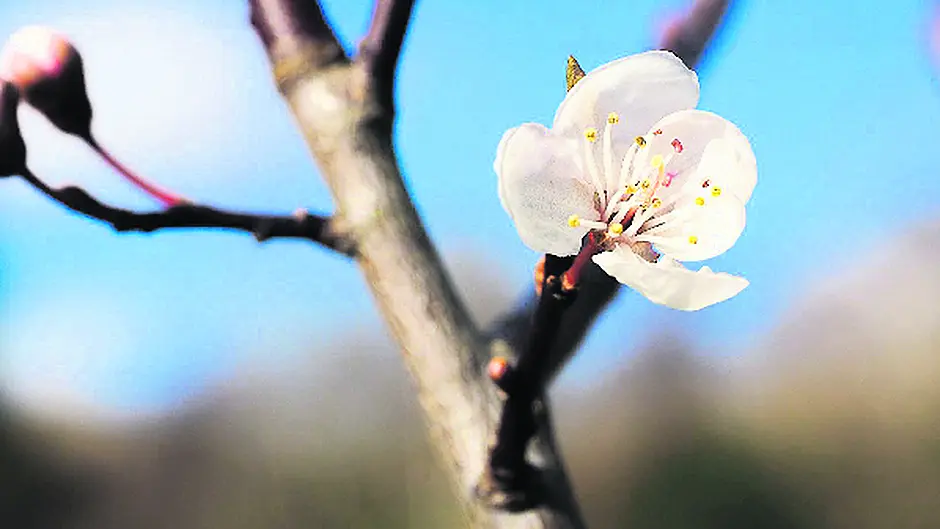I love March! It can bring frosts and bright days, or wet ones too, but there’s something on the move in the garden and it won’t be stopped.
I love March! It can bring frosts and bright days, or wet ones too, but there’s something on the move in the garden and it won’t be stopped.
There’s growth on all sides with leaves bursting and green shoots surging upwards in the flower borders. And this is the month when everything can still be done right: draw up a plan, buy seeds, sow when you should, buy what you need, and gather all of your gardening energy for the great growing year ahead.
Before the rush
Make a list of things you need for the garden and stock up now before the rush begins. Think of things like compost and plant feeds. Organic slug pellets are useful too, and so are some bamboo canes.
You can also look at some recycling and reuse. If you don’t have enough pots for raising plants from seed, then either use plastic fruit punnets and tubs (with holes for drainage), or fill toilet roll inserts with compost. Hazel poles make great supports, cardboard boxes can be flattened as mulch, and bubble wrap will keep plants warm on cold nights. There are many other practical and cheap options of course, so set the brain running!
Blossom
First blossom is out on some ornamental trees and it won’t be long before fruit trees follow suit. Keep an eye out for bullfinches, even at this early stage: they can strip flower buds before they open. Hanging DVD’s in trees, or strips cut from strong plastic bags, can help to deter these shy birds. Or you can buy humming tape, or deterrents that glitter and twirl. The main thing is to put these up early enough to protect barely-open buds and to change things around if the birds get used to one particular scaring system.
Onions
Early March is a good time to plant onion sets but do consider the weather first. It may be worth waiting a week or two if there are lots of frosts in the forecast. Early planting can grow the largest bulbs, but if sets are exposed to freezing temperatures when green shoots are small, then this predisposes the plants to early bolting.
Planting through black groundcover or polythene helps keep temperatures even, as can covering plants with horticultural fleece on cold nights.
Remember to cover newly planted onion sets with netting for the first few weeks. This stops birds from pulling at the brown necks and lifting the sets. Once green shoots are up, birds seem to leave them alone.
Courgettes
Sow some seeds in pots in early March and plants will be large enough to go out into the garden in April. You can get some early young courgettes in May in this way, but the secret is to plant out in a sheltered sunny place and to cover these plants with a large clear plastic tub or inverted 5ltr water container (with the bottom cut off). These act as mini-greenhouses and should be removed on hot days, as temperatures rise, and then replaced at night.
Three plants will usually provide plenty of courgettes for the average household. Sow one extra in case any fail and you can ring the changes with yellow, striped and round varieties.
Broad beans
Autumn sown broad beans will be starting to flower. If plants are covered with a cloche, then open this up during the day. Flowers are self-fertile and theoretically they will set pods even under cover, but you will get a much more reliable set if flowers can be reached by pollinating insects.
Sow more beans now for a summer supply. These can go straight into the ground outdoors provided they are covered with a cloche. Young plants are reasonably hardy as they emerge, however it is a good idea to water off any hard frost before the sun does the job for you.
Sowing and planting
There’s plenty that can be got into the ground over the next two weeks and these early sowings can give some of the best results. If you wait too long for the ideal moment to arrive then you may miss the best planting times. Read the packets for timing and temperatures and go for it. Most seedlings appear within a couple of weeks, so there’s plenty of time to resow if some seeds fail.
Try: peas and broad beans, tomatoes, peppers, onions, garlic, parsnips, Brussels sprouts, celeriac, beetroot, cabbages, cucumbers, potatoes, lettuce and salad leaves. There are other things too, but this list will give you a very good start to the vegetable garden.
Don’t forget flower seeds
There are lots of annual flowers to sow in March so choose some favourites.
Sweet peas always have a place in my garden, as do cosmos, marigolds, cornflowers, nigella, nasturtiums, lovely dainty ladybird poppies and more …






